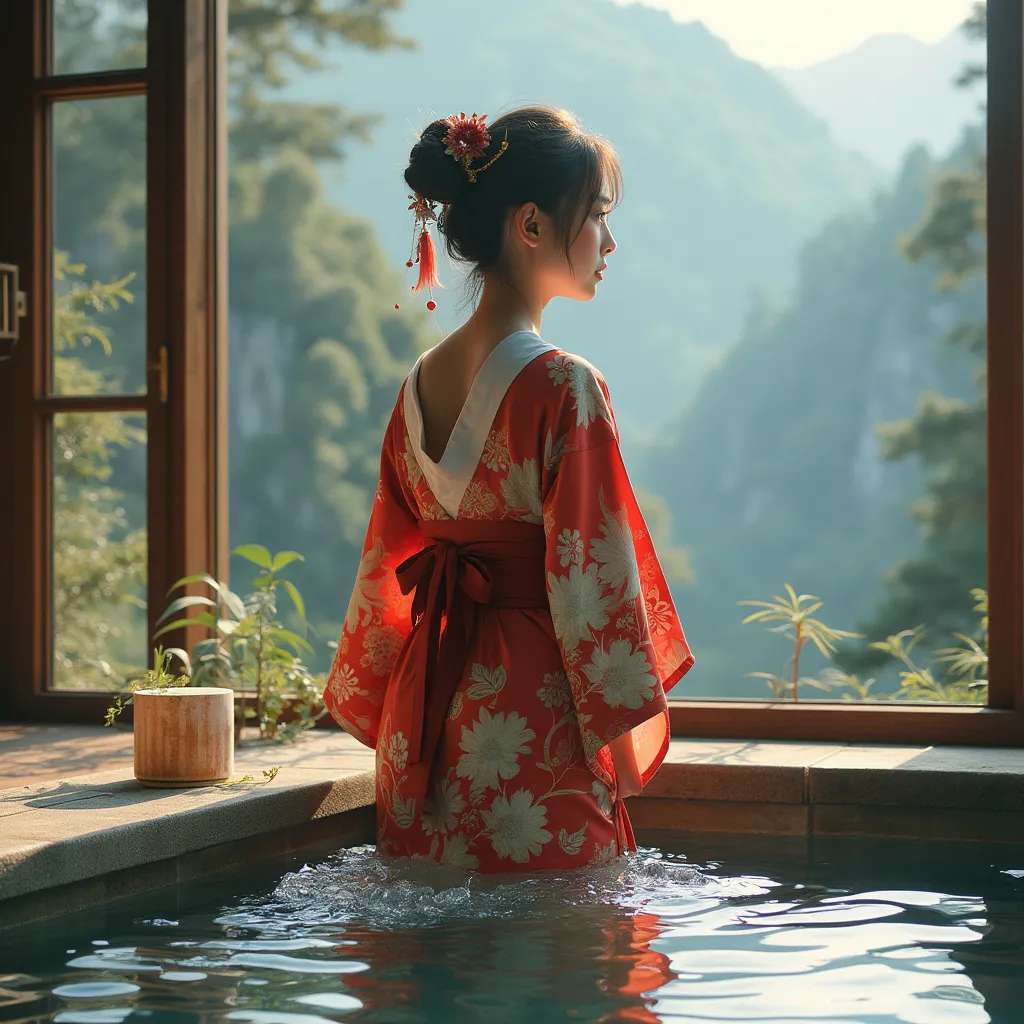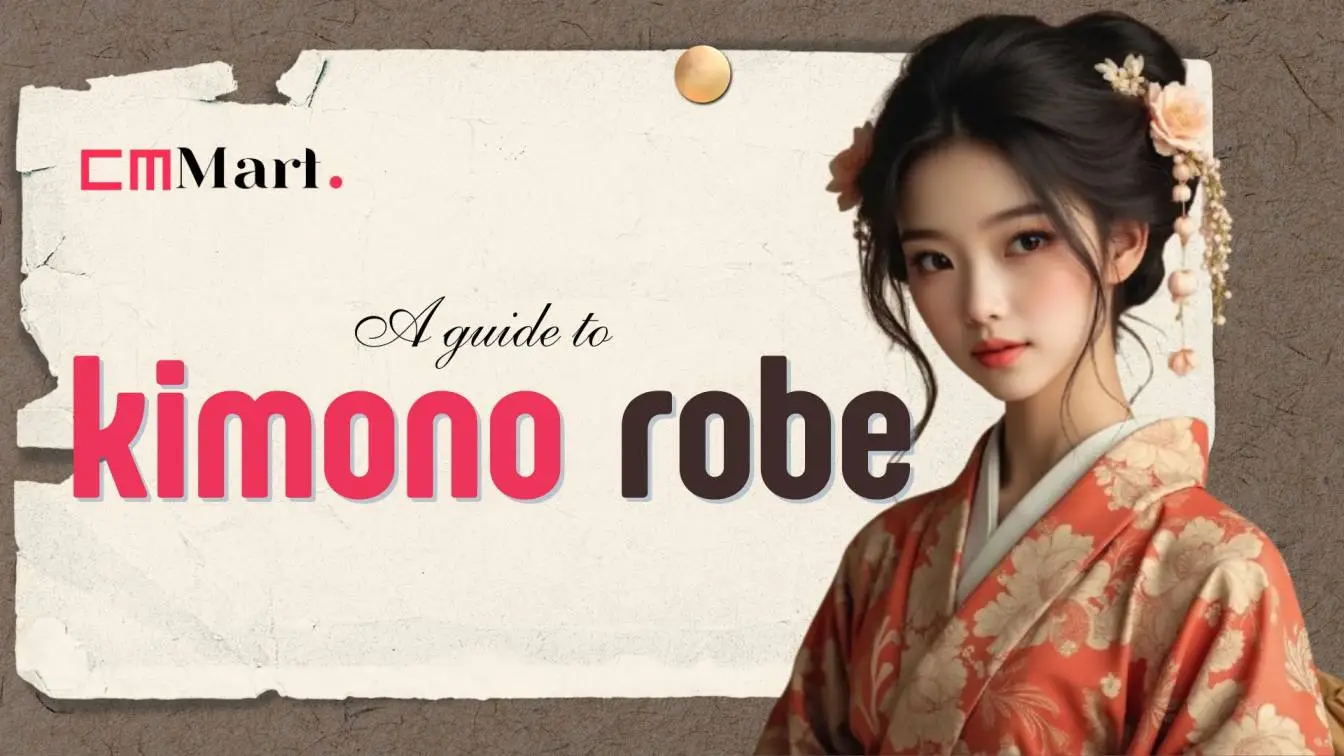Kimono Robe have been popular outfits since ancient times. It's important to have a soft and comfortable robe for a quiet evening or morning at home. With so many styles available, it can be difficult to choose the right one for your hobbies, lifestyle, and personality. But don't worry, we're here to help. In this tutorial, we'll discuss the traits and components to consider when shopping for the perfect robe.
What is a Kimono Robe?

A kimono robe is a modern move on the classic Japanese kimono, a symbolic gown that's knew for its sensitive details. Kimono robes are attractive and fashionable, and may be used as loungewear.
Caring for Your Kimono Robe
- Material: The fabric of a kimono robe has a key role in its comfort, durability, and ease of washing. It is crucial to pick a fabric that is soft, breathable, and simple to care for. Popular fabric choices include cotton, silk, microfiber, and terry cloth. Whether you like a thicker robe for warmth or a lighter one, select a fabric that meets your needs.
- Length: The length of your robe should be selected by your height and personal preferences. Robes normally come in three lengths: ankle length, mid-calf length, and knee length. Taller persons should opt for ankle-length robes, while shorter ones should select knee-length or mid-calf-length robes. When the robe is the proper length, you will feel comfortable and at ease.
- Style: The style of a robe may offer charm and character, with different choices available including kimono, wrap, shawl, and hooded types. Hooded robes are great for individuals seeking warmth and comfort on cold days, while kimono-style robes are classic and adaptable. To choose which style fits you best, it is essential to try on many styles.
- Color: The choice of robe color is totally up to you. You may choose a shade that represents your uniqueness or fits your home’s style. Brighter hues like pink, blue, or green may give individuality to your ensemble, while neutral colors like white, ivory, or gray go well with everything. If you want to add some flare to your attire, choose a robe with designs or patterns.
- Quality and Brand: Choosing a high-quality robe from a reputed brand is vital. You want a robe that is durable, preserves its color, and stays soft after washing. Consider labels like Brooklinen, Parachute, and Ugg, which specialize in robes. These providers guarantee that you get the comfort and relaxation you deserve.
Comfort and relaxation are key when choosing a robe. Look for one that is not only comfortable and warm, but also fashionable to enhance your experience. Consider factors like material, length, style, color, quality, and brand to find a robe that suits your preferences.
Our complete guide is designed to help you find the perfect robe that meets all your needs. Once you've found the right fit, you can enjoy the luxurious comfort and relaxation it provides. Picture yourself curled up with a good book, sipping your favorite drink, in your new beautiful robe.
Caring for Your Bathrobe: An Informative Guide
A bathrobe is comfy and essential for maintaining a warm and comforting environment after a shower. By following proper maintenance practices, you can ensure that your bathrobe lasts longer and stays soft. This page provides crucial tips on caring for your bathrobe. Make sure to come back for more!
- Read the Care Label: Start by reading the care label connected to your bathrobe. It will include precise directions on how to care for the material. Follow these recommendations carefully to avoid any harm. Some bathrobes could need machine drying, while others need to be hung or put flat.
- Wash with Care: When washing your bathrobe, it’s preferable to wash it separately from other apparel to avoid tangling or fabric damage. Use cold water and a light detergent. Avoid using bleach, since it might make your bathrobe less fluffy and bright.
- Dry Properly: Drying bathrobes may be a difficulty. Terry fabric bathrobes are best hung to air dry, as machine drying may make them seem hard. Fleece or cotton kimono robe may be tumble-dried on low heat. Avoid direct sunlight to avoid fading and damage to the cloth.
- Store Correctly: After washing and drying, keep your bathrobe appropriately. Avoid crumpling it in a drawer and instead hang it in a well-ventilated spot. To keep its form, use a hanger with broad shoulders. Make sure the bathrobe is totally dry before storing to avoid mold and mildew development.
- Preserve Quality: Skip dryer sheets and fabric softeners, since these might weaken your bathrobe’s absorbency. Instead, choose for vinegar as a natural softener. Additionally, avoid hanging your bathrobe on hooks that might stretch or distort the shoulder region, resulting in an unpleasant fit.
To give you with helpful and useful ideas on how to effectively care for your bathrobe, we have supplied you with the following. When you are seeking for detailed directions on how to keep your bathrobe, it is always advised that you carefully review the care label that is linked to it. After giving your bathrobe a gentle wash in cold water with a mild detergent, make sure that it is thoroughly dried by patting it dry with a delicate touch. When it comes to appropriate storage, it is advised that you hang your bathrobe on a hanger with broad shoulders in a position that has enough ventilation. By sticking to these basic and uncomplicated suggestions, you will be able to swiftly retain the suppleness, comfort, and durability of your treasured bathrobe.
FAQ's
What is a Japanese womens robe called?
A yukata is an uncut cotton summer kimono, used in casual contexts such as summer festivals and visiting adjacent bathhouses. The name is translated literally as "bathing cloth" and yukata initially were worn as bathrobes; their present usage is far wider, and are a familiar sight in Japan during summer.
What are the benefits of wearing a kimono?
Straight-line-cut kimono were excellent for each weather: they could be worn in layers to offer warmth in winter, while kimono made of breathable fabric such as linen were pleasant in summer. These benefits helped kimono become a part of Japanese people's daily life.
Do you wear a bra with a kimono?
Undergarment like bras don't perfectly fit the kimono wear. Bras are fantastic for supporting your bust and holding it up, but they can also harm the shape of the kimono. A bra may even expand the shoulder of a kimono further over time.








.webp)